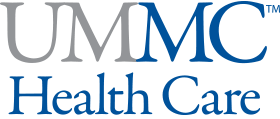- Health Care
- ENT
- Patient Handouts
- Adult
- Speech Language Pathology
- Swallowing
Swallowing
Dysphagia Pureed Diet
A Dysphagia Diet is used for people who have difficulty swallowing. Foods on this diet are easier to chew and move around in your mouth. This will reduce the risk of food and liquids going the wrong way. Foods on a Dysphagia Pureed Diet are a pudding-like texture that is smooth, blended, or pureed. Eating foods not allowed on this diet will increase your chance of swallowing problems and can result in food going into your airway instead of your esophagus (food tube). Food or liquid that goes into your airway instead of your stomach puts you at risk for not getting enough nutrition and/or getting sick (pneumonia).
Recommended Foods:
Beverages/Liquids:
- Liquids should be thickness recommended by your SLP or doctor (thin, nectar, honey-thickened)
Starches, Breads, and Cereals:
- Hot cereals (oatmeals)
- Pureed pancakes or French toast
- Pureed pasta
- Mashed potatoes/whipped sweet potatoes
Foods to avoid: Bread/Bread products, Granola, Chips, Crackers, Pizza, Rice
Meats/Meat Substitutes and Soups:
- Pureed meat
- Pureed cooked eggs
- Hummus or other pureed legume spreads
- All strained, cream-based or broth based soups (thickness as recommended by SLP or doctor)
Foods to avoid: Dry, tough meats (bacon, hot dogs, sausage), sandwiches, peanut butter, non-pureed eggs, soups with chunks of meat/vegetables
Fruits and Vegetables:
- Pureed fruit without seeds or skin
- Applesauce
- Pureed, cooked vegetables without seeds or skin
- Refried Beans
Foods to avoid: Raw whole fruits/vegetables, dried fruits, salads
Desserts:
- Pudding, custard
- Yogurt
- Jello, sherbert, sorbet, and ice cream
Foods to avoid: Dry, coarse cakes or cookies, rice or bread pudding, hard candies
Condiments:
- Butter/margarine
- Mayonaise, mustard, ketchup, BBQ sauce, steak sauce, gravy
- Sour Cream, Cream Cheese
- Jelly, syrup
Foods to avoid: Olives, pickles, sauerkraut, chunky relish
How to Prepare Pureed Foods:
Supplies:
- Blender or food processor
- Fork or whisk
- Plastic container
- Cooked Foods: one serving = ½ to ¾ cup
- Liquid: about ¼ cup per serving of cooked food
Liquids to use:
- Broth
- Clear soups
- Cream
- Cream soups, strained
- Fruit juice
- Half and half
- Ice cream with no nuts
- Milk
- Smooth yogurt with no chunks of fruit or nuts
- Sour cream
- Tomato or vegetable juice
To puree in blender:
- Put small pieces of cooked food in blender.
- Add small amount of liquid, about ¼ cup.
- Blend until pureed or smooth, with no lumps.
- If puree mix is too thin, try adding flour, cream, sour cream, or yogurt to thicken. If puree is too thick, add more liquid to make it smoother and creamier.
Note: Solid fats, such as butter, blend well if they are first melted. Oil, salad dressing, and cream can be added directly to the puree.
Tips for getting enough nutrition:
- Try to eat from a variety of food groups, so your body gets the nutrients it needs.
- To make sure you get enough calories and protein, you may include liquid nutrition supplements, such as Ensure, Boost, or Carnation Instant Breakfast if they are thickened to the right texture, if needed. “Plus” versions of these products provide the most calories and protein per serving. Taste is best when served cold.
- Eat small, frequent meals, especially if you are not able to eat large meals.
- Add gravies or sauces to enhance flavor and to increase moisture of foods to ease swallowing.
- Serve hot foods hot and cold foods cold to provide a variety of temperatures in your diet and to avoid food contamination.
Talk with your Speech-Language Pathologist (SLP) regarding any questions you may have about your diet recommendations or your swallowing. UMMC Speech-Language Pathology 601-815-6064.


